Pirate Ghost Ship model kit
I am slowly coming back to miniature painting, and I thought that buying a simple but model kit could be a nice start. After going to a naval museum I thought about maybe some ship, and decided to buy the Revell Ghost ship model kit. It is far easier to assemble than any normal boat (with the sails and cords/ropes) and the "glows in the dark" feature peeked my curiosity.
The model is advertised as "easy-click system", and while most of it can indeed be built without glueing the pieces, as they just snap in, there's a few ones where I think it would very easily go off, like the union points between the (plastic) ropes and the masts. So I just glued everything.
It comes with a glow in the dark paint can, and in theory you don't need anything else, but I decided to basecoat the whole ship with black, and bronze for the brown plastic parts. The special paint is curious, feels like a mix of glowing pigment and glue. You'll have to apply multiple layers, and the ship eventually gets the greenish color, but must also be careful as a too big and non spread chunk of paint will stay when dried. Also the stickers are not water-based, but simple plastic children-like ones, which is sad as I couldn't properly hide them despite applying a few layers of glowing paint over. I should have cut them with scissors to leave just the real skull and crossbones part, but didn't thought about it.
Overall, I really like how the finished model looks. It was a fun assembly, a simple but long painting process, and it really glows nicely in the dark "after charging" with sunlight.
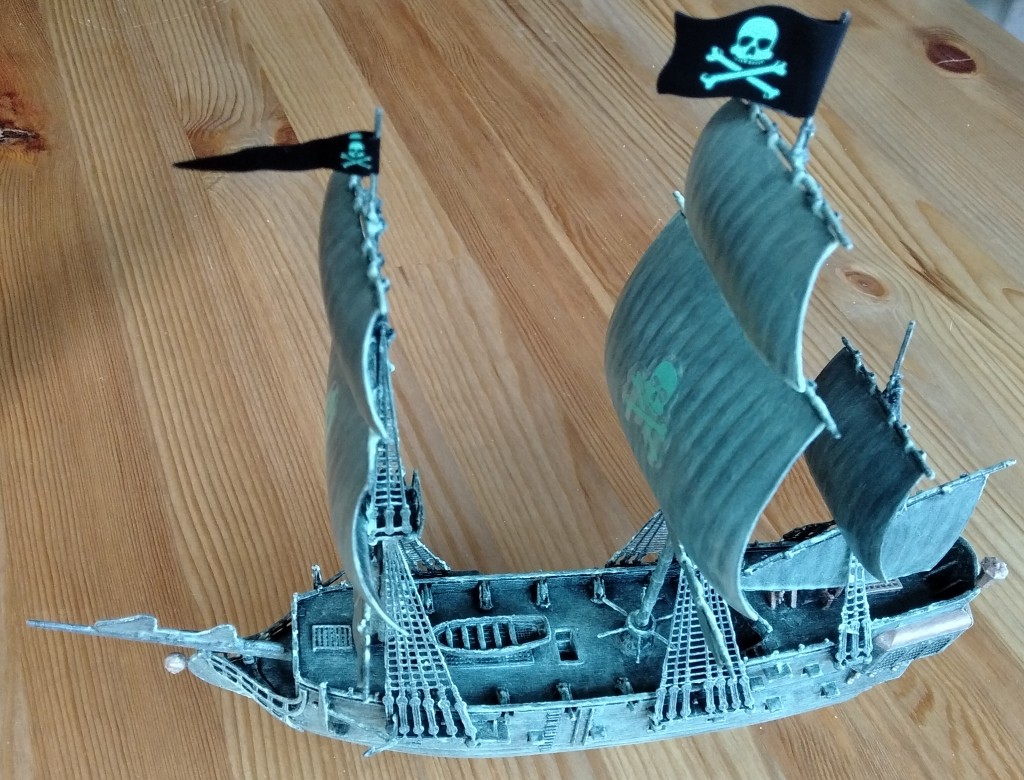
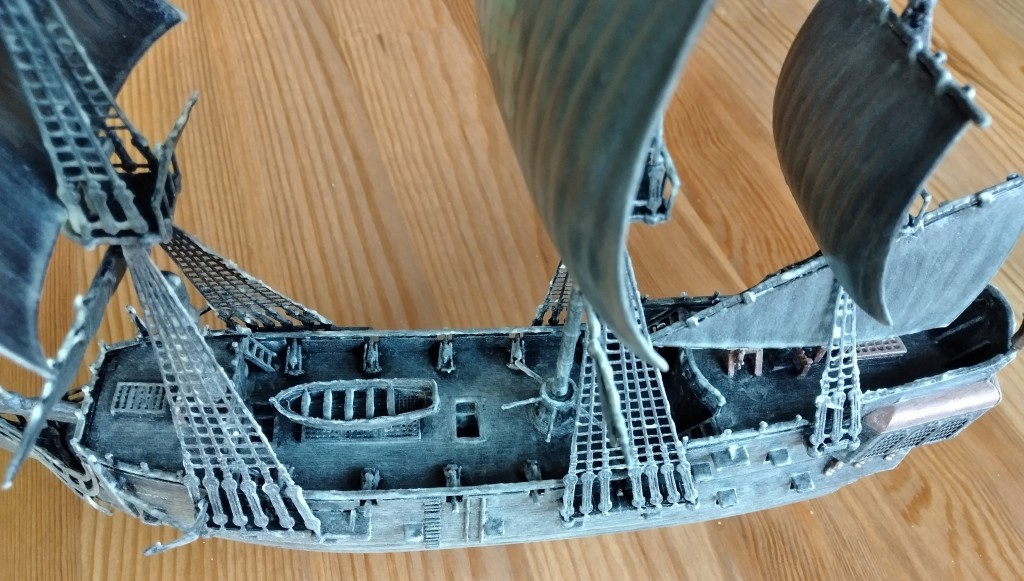
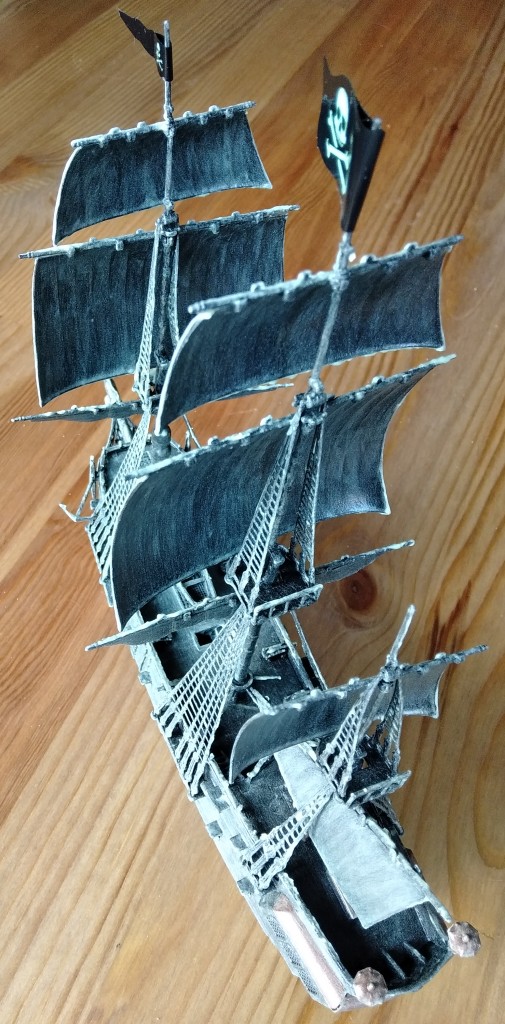
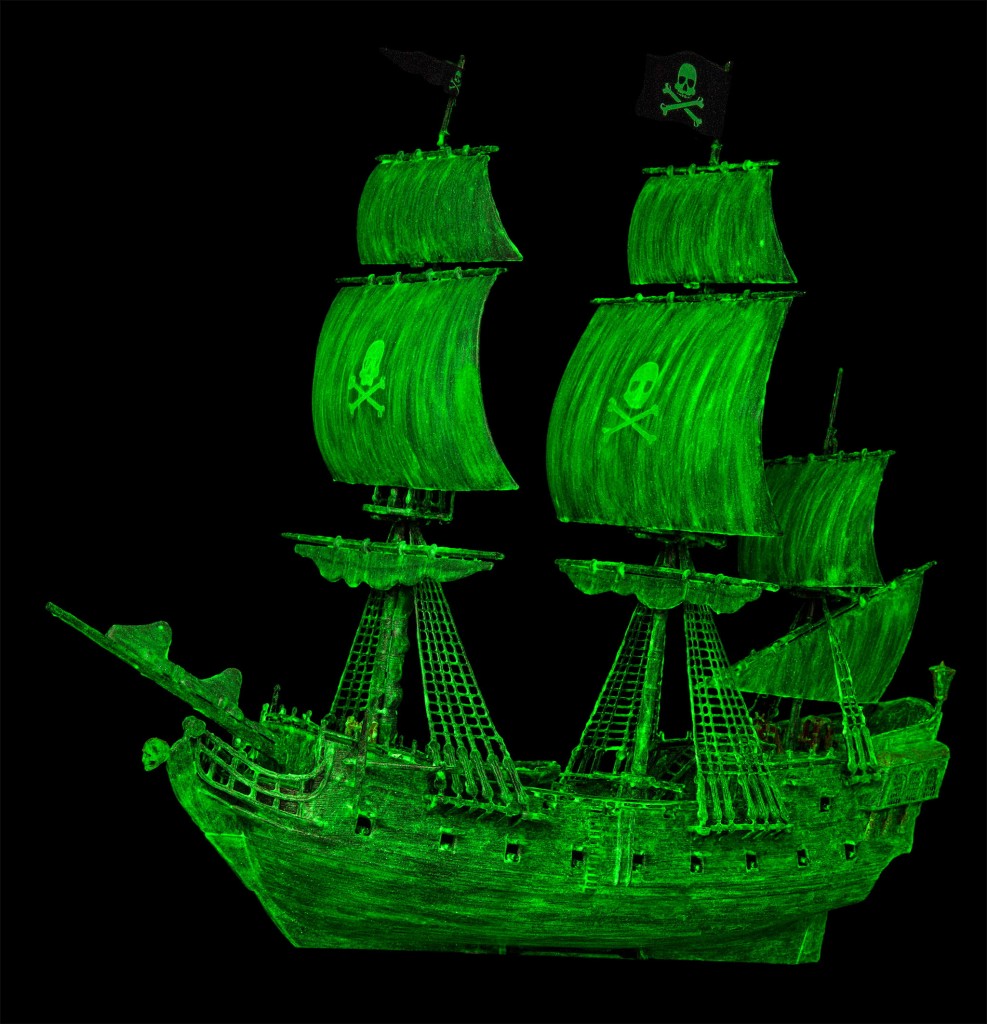
Glowing photo taken from the official Revell site as my camera is crappy and can't take good photos in the dark. While not as incredibly green, it does glow a lot and looks very cool.
Tags: Painting
Book review: The Art of The Lord of the Rings
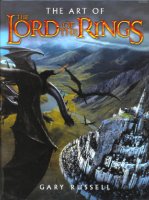
I had since quite a while pending to read The Art of The Lord of The Rings, and I had ignored it so much that I didn't even knew that it was based on the movies trilogy. Having art pieces from Alan Lee and John Howe, I thought it would be based on the classic drawings that I remember from my childhood... But no, although it features artwork and text from those known artists, among others, it is all tied to the movies. This is not bad on itself, just that I had to adjust my expectations. I guess I'll have to get my hands on the other art book with the same name someday!
Much of the content, which consists on around 500 illustrations, sketches and drawings, was the initial inspiration or initial iterations before the filming of the movies, so I really like how many of the illustrations predate the final look, by showing different approaches to characters, scenarios, and sometimes even simply colors and themes. We get to see different versions of Gollum, more armoured orcs and elfs, iterations on different iconic buildings... Always with very high quality and beautiful imagery.
After the initial "shock", it was a pleasant surprise to find all new content based on some of my favourite movies. It even made me now prioritize reading the books again - has been really long since I last did - in order to proper see the differences between both mediums.
Tags: Books
Status Update: Final Fantasy VII Remake, LOTR and Elden Ring
LOTR Vol. I
I played and finished J.R.R. Tolkien's The Lord of the Rings, Vol. I. I must confess I had to use a guide, because the game a) has an archaic UI with commands and text inputs and b) contains quite a few bugs and game-over triggers (some of them not immediate), so I went the "safe enjoyment" route.
It's been so long since I read the books, and I've watched so many times the movies, that I feel I must read the original materials again to see if the game departs a bit in certain areas, or if it is correct and were Peter Jackson's movies the ones reordering certain events. But in general it felt an interesting adventure, with lots of text (thankfully!) and attempts to provide multiple choices and some kind of open-world mechanics, although sometimes it also meant that you do things wrong and don't know until later that you've effectively screwed up the game and should start over. In any case, I will soon play Vol. II, The Two Towers and see how much did it improved (if anything).
Final Fantasy VII Remake
I recently finished Final Fantasy VII Remake, and my general feeling is of sadness. The graphics are amazing, the music is amazing, the new combat system is action-packed and probably the best in the series, the bosses look incredible, some fragments of the game are really good... But despite really trying to, I couldn't get to love this "remake". It contains so much filler content, so many dull conversations, boring and repetitive secondary quests and all kinds of tricks to increase the length of a playthrough, that I really wish they instead just rebuilt the engine and left everything like in the original FFVII but with new Graphics and sound (and if anything, the new battles). There are also story changes, some of them extensions (way more secondary characters lore and interactions and conversations), some of them not bad (Shinra is more evil, or the whispers of fate are two good examples), but some... make me be aware of the next title.
I put the nostalgia glasses on (as a friend of me says), but precisely because of that I enjoyed it even less, because I had began playing the original last year and stopped at the precise same moment this title ends, and comparisons are bad, but sometimes inevitable. Or maybe I've also grown and are no longer a hyped teenager experiencing his first Final Fantasy title on a quite decent PC port (2x the PSX resolution and enhanced 3D effects!). I'm not sure exactly what the combination is, but what I really think is that this title is an attempt to move the fans into a new game, instead of representing a tribute to the old one. We'll see with the second title.
Elden Ring
I tried to avoid the hype, but it caught me. I am not a fan of the Dark Souls games mostly because I don't have enough spare time to endure the slow training the games require, so I cannot say that my time so far with Elden Ring has been amazing. But it hasn't been bad either, I clearly see that it is a really good game, just quite punishing and forcing you to learn the hard way (by dying a lot). I get the feeling that the story is half open to your imagination half "We didn't care much about it" (no matter who they say collaborated in the lore and/or script), and similarly it is an open world "without borders" but also sometimes feeling chaotic or at least far from being as polished as Zelda: Breath of the Wild's world.
I am around 30 hours in, still exploring mostly on my own, but I began taking small hints from a guide (for now just a map marking a recommended order of exploring the various game areas), because sometimes frustrates to be exploring for hours and then you realize you are in a high level zone and simply trying to escape you die, and then have to decide between spending +1h on recovering the gold runes versus doing anything else (in the game or in real life). I appreciate the openness but it is often too much for my taste, I would have loved some extra guidance, again as Zelda or a GTA or an Assassin's Creed do.
I will finish the game but I am surely not going to go hunt all the secrets, of which there seem to be many. I'll focus my knight on levelling enough to kill the bosses and do all main quests, while exploring from time to time but keeping in check the limits. Time is lately my most valuable and scarce asset.
Tags: Videogames
Book review: Project Hail Mary
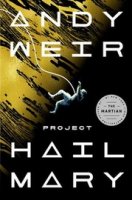
I enjoyed a lot reading The Martian, from Andy Weir, so I wanted to read his new sci-fi book, Project Hail Mary. For the last weeks, I've finally went trough it, and I liked it.
As you will experience way better the story not knowing almost anything (but the wikipedia link above will give you a brief summary), I'll just mention the beginning, where a guy wakes up with amnesia in a spaceship. He gradually remembers everything, from who he was to what's he doing there, what's the purpose. The book combines blocks of flashbaks (as the main character remembers them) with the main timeline (his present time), in a sometimes a bit too convenient way, but still well executed to keep you intrigued up until the end.
It is way more fictional than the previous book from the author, but maintains a similar stereotype of the protagonist being quite clever (here even more so) and able to solve some situations and setbacks with apparent ease. Also the humour is back, this time in bigger doses, but not to a point that becomes pedantic. I had a few laughs while reading certain thinkings and jokes of the main character.
Feels I'm not really saying much but I do really want to avoid spoiling anything of the story, so I'll just say that if you like science fiction, spaceships and bits of science, you will probably have a good time reading the book. It not as great as The Martian was (to me at least), but still a very enjoyable reading and funny space adventure.
Tags: Books
On Looter-Shooters and Adventure-RPGs
As I'm having some disappointment with Final Fantasy VII remake, which I am playing but far from enjoying as much as I expected (and sometimes even dreading "yet another tiring crappy quest to fill hours of content"), I decided to recap other games that I have played recently or that I am currently playing that relate somehow with RPGs. To be specific, with two sub-genres that keep getting better and better the more titles that appear.
Looter-Shooters
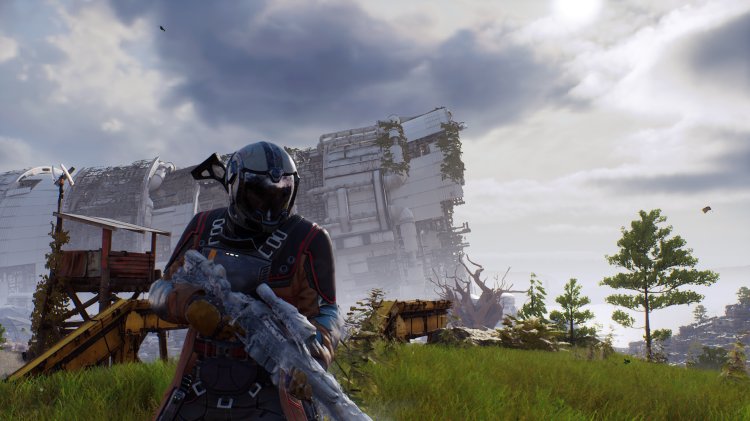
Looter-shooters are a curious genre. Derived from "lite RPGs" like Diablo, translate the same loop mechanics of "kill kill kill, and upgrade your equipment and hunt for better loot" to first or third-person shooters. The first game that I can remember did this was Borderlands (I have only played and finished the 1st, now it's a series), but there have been quite a few titles with varied success. In my case, I've played the main campaign of Outriders, and recently finished all the main and secondary missions of The Division, the later featuring an early slow game, but picking up the pace and becoming quite interesting near the end. Too bad I'm not often in the mood of endless gear grinding, not even in the Diablo games (I've done some in Diablo 3, but I get tired), and thus the "end-game" becomes more boring as the random missions you can repeat get less interesting, and PvP is not my thing.
Anyway, an interesting subgroup, especially now that I have FPS-fatigue after so many years playing so many games. And I have The Division 2 awaiting some other games that go first, so more fun incoming.
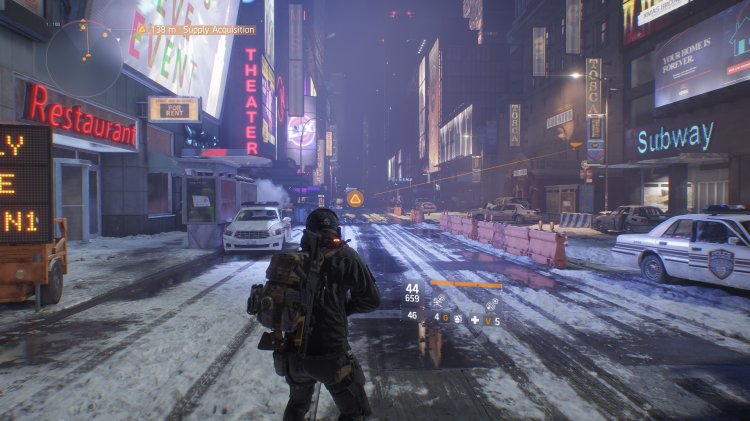
Adventure-RPGs
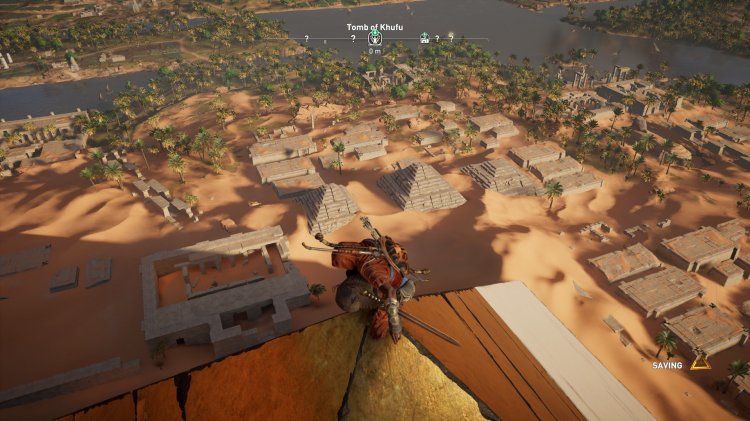
This is my own personal classification for the genre of games that combine adventure, action and lite-RPG items: quests, a few stats or "things to improve" and loot seeking. In the past my beloved Zelda: Breath of the Wild gave me now more than 200 hours of entertainment, but other titles that have slowly moved and even advanced further towards that trend are the Assassin's Creed videogame series. AC Origins was incredible to me as I love the pyramids, and after some years of pausing playing the series, was a breath of fresh air to have such a rich, incredibly detailed and awesome Egyptian open world. Then, last year I played AC Odyssey, and while I exhausted my patience with the (literally) hundreds of secondary quests before finishing the expansions/DLCs, again the rich Greek world depicted was extraordinary, plus finally you could play a female character in the series, and the tiny bits of humour in some conversations derived of playing a Spartan woman were priceless.
And now, I also recently purchased AC Valhalla to enjoy some nordic landscapes and classic culture. I'm just beginning the game, but clearly Ubi Soft are one of the best in creating virtual worlds... the scenarios go from spectacular to breathtaking, the weather effects are almost real, and details like watching Northen Lights (Aurora Borealis) or the intricate nordic designs and lore (viking women were probably more dangerous than spartans!) are signs that I will spend a great amount of time roaming the snowy lands and admiring the landscapes.
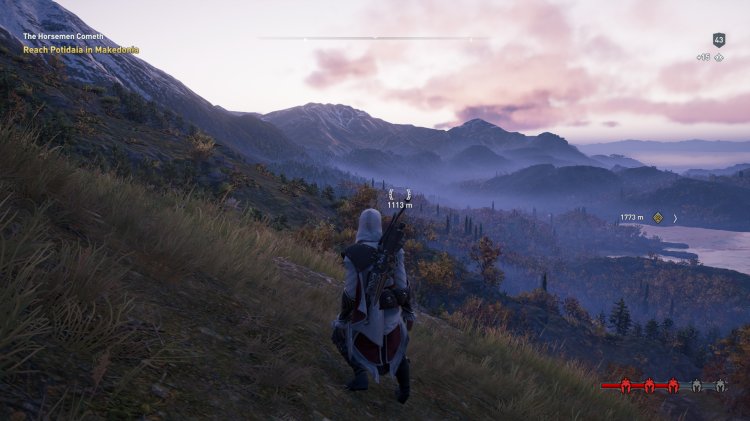
Tags: Videogames